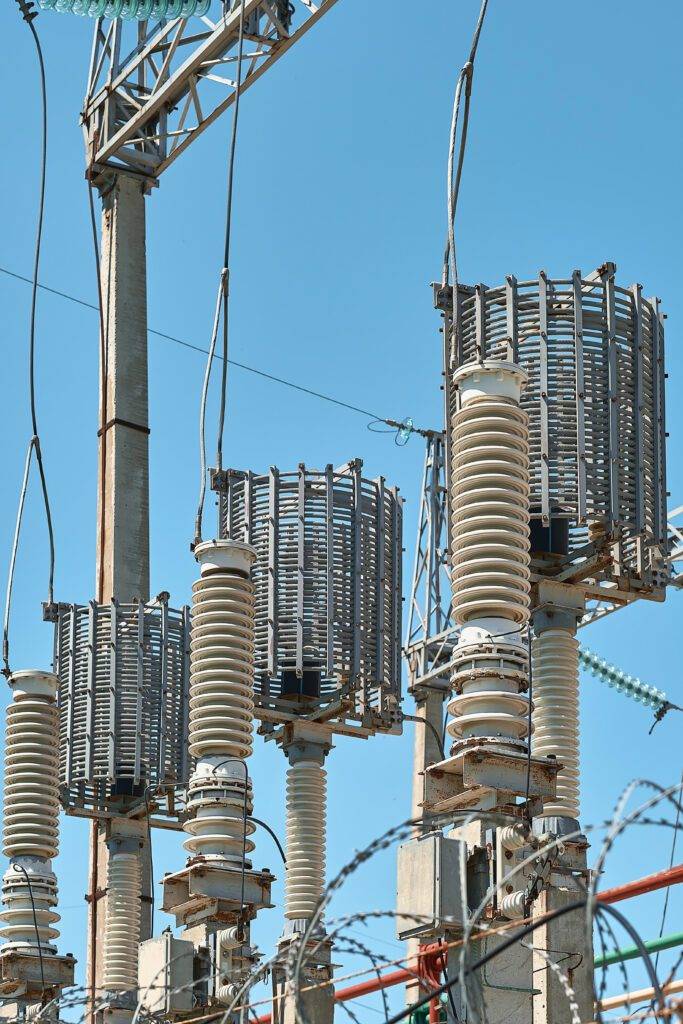Operation of substation facilities in industry
 Electrical power facilities
Electrical power facilities
Substation facilities are quite a general term. It doesn’t say much to a person uninitiated in energy issues. In the article below, we explain what substation facilities are and how they are used on a daily basis.
Substation facilities
Substations are installations that are used to distribute and transform electric current. For this reason, there are distribution, transformer and transformer-distribution substations. They are placed in a separate, fenced area, in a separate room or on a certain structure – these are substation facilities. Everyone has probably seen such a substation more than once, without necessarily paying attention to it. And that’s a good thing, because the described objects should work unnoticed by the average person and ensure efficient energy distribution.
In addition to cables and busbars, substation facilities include numerous switches, protection devices and (in larger substations) control rooms. The latter collects control and measurement devices. They allow you to monitor the condition of the network, locate faults and conduct electrical measurements.
The purpose of the electrical switchboard is clear – it is about dividing the current flow into individual lines to ensure supply to numerous consumers. Transformers are more complicated. They are used to adjust the electrical voltage either to the transmission line or to the receivers. The general rule is – the further we want to send the current, the higher the voltage should be (even over 400 kV). The receivers are adapted to low voltages (e.g. 230 V in Polish houses).
Why are transformers necessary?
The laws of physics show that power losses in cables are directly proportional to the second power of current rating. This means that simple savings tend to increase the voltage before it is sent from the power plant to the transmission line. Fortunately, alternating current, thanks to magnetic induction in a system of two coils, can have changed voltage and current values with almost preserved power. These two coils are the most important parts of the transformer. Of course, there are always some losses – that’s why there is the concept of transformer efficiency. High (or extra high) voltage networks are built between cities or power plants. However, in the suburbs there are transformer-distribution substations. They constitute an energetic entrance to a city that needs medium and low voltages.

Operation of substation facilities in industry
The daily operation of substations inevitably leads to the wear out of many parts. Transformers often need electrical insulating oils that need to be replaced. Weather conditions also cause wear – rusting and cracking of ceramic insulators. There are also larger damages and failures. Therefore, operation takes into account many activities:
- replacing insulation
- oil service
- diagnostic tests of control devices
- periodic inspections of security, lightning protection and other installations
- tracing and repairing cable and device failures
- measurements of anti-shock protection
- replacement of seals
- inspections and diagnostic tests of transformers: measurements of insulation resistance, loss parameters, moisture, winding deformations, as well as inspections of cooling units
Such numerous activities serve to prevent serious failures long before they actually occur. When a seemingly insignificant damage or defect is detected, repairs may take a while. The same thing, left unattended for a long time, may lead to more serious failures, which are much more expensive to control.
The operation of substation facilities in industry also includes renovations. The substations are designed to operate for decades, so they also require necessary modernization over time. This involves, among others, with the construction of new buildings or supporting structures, excavation, installation of control and cable cabinets, installation of busbars and cable trays, laying of cables, installation of earthing. These are tasks for power energy specialists, so it is worth entrusting them to the best, as Eltel Networks.
Special operational challenges of substations
A non-obvious aspect of substation servicing is availability. Modernization works are often planned with short notice, just a few days in advance. Failures are even more unpredictable. Therefore, the team should be ready to go into the field at any time to quickly restore lost power. Service technicians sometimes have to face difficult and even dangerous working conditions. Sudden shutdowns may be caused by violent winds, icing or flooding. Just getting to a distant substation with all the necessary equipment is then difficult. Damage to safety devices also occurs, so the risk of accidents at work is significant.
Even less obvious aspect of operational work is documentation, which is crucial to prove the reliability of any construction, expansion or repair. After each work, an acceptance report must be signed, which proves the contractor’s responsibility. A diligent company always takes care of safety, technical and formal matters.